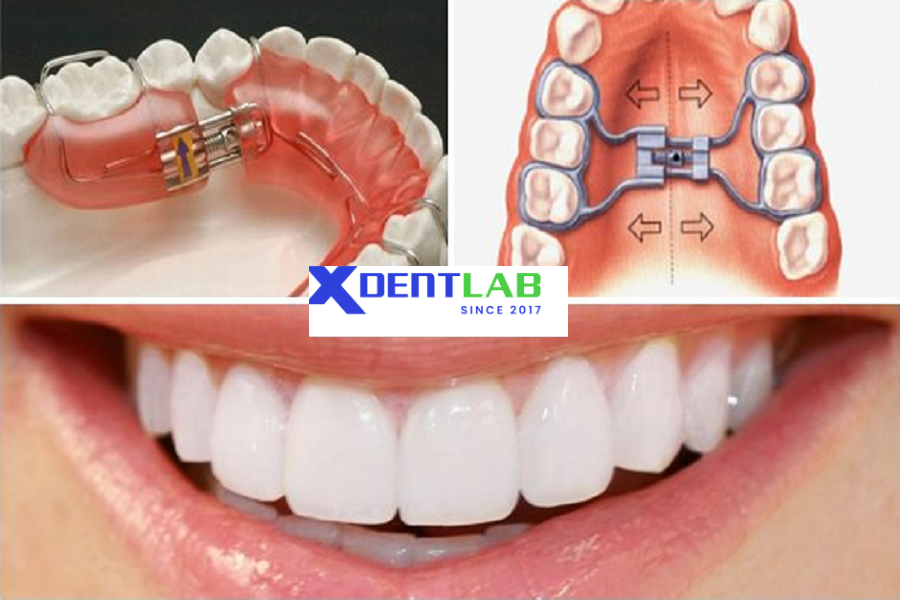Global orthodontic device fabrication xdentlab.com . Orthodontic device fabrication plays a critical role in dental care, specifically in the alignment of teeth and jaws. The primary purpose of these devices is to correct malocclusions and enhance the overall oral health and aesthetics of patients. Among the diverse types of orthodontic devices, braces, aligners, retainers, and bands are the most commonly utilized. Each type serves a unique function, addressing various dental issues, and is tailored to meet individual patient needs.
Link fanpage : Dental Lab In VietNam
Introduction to Orthodontic Device Fabrication
The general fabrication process of orthodontic devices involves several key steps, starting with a thorough assessment of the patient’s dental status, usually aided by digital scans and x-rays. Following this evaluation, the orthodontist designs a personalized treatment plan. This plan is essential for determining the specifications of the devices required. Afterward, advanced technologies such as computer-aided design (CAD) and 3D printing have transformed the manufacturing process, allowing for increased accuracy and efficiency. The result is a more comfortable and effective orthodontic appliance. These innovations also enable the production of custom-fit aligners that significantly improve treatment outcomes.
Advancements in technology and materials have significantly impacted orthodontic treatment, offering enhanced performance and patient comfort. New materials, such as lightweight alloys and biocompatible plastics, are now being utilized to produce orthodontic devices that reduce discomfort and treatment time. Moreover, orthodontic fabrication has shifted towards digitized workflows that facilitate faster prototyping and better predictive modeling. This evolution presents remarkable opportunities for practitioners and patients alike, emphasizing the importance of staying informed about the latest trends in orthodontic device fabrication on a global scale.
Current Global Trends in Orthodontic Device Manufacturing
Vietnam dental laboratory device manufacturing industry is experiencing rapid evolution, driven by advancements in technology and changing patient preferences. One of the most significant trends is the increasing level of automation in the production process. Automated systems enhance precision and efficiency, allowing manufacturers to produce orthodontic devices at a faster rate while minimizing human error. This shift towards automation also helps in reducing production costs, which can lead to more affordable treatment options for patients.
Another impactful trend is the adoption of 3D printing technology. This innovative method shows great potential for orthodontic device fabrication, as it allows for the creation of customized appliances that cater to the unique needs of individual patients. Orthodontists can now offer tailored solutions ranging from braces to aligners, thereby enhancing patient satisfaction and treatment outcomes. 3D printing not only streamlines the manufacturing process but also enhances the design capabilities of orthodontic devices, enabling more complex geometries that were previously difficult to achieve.
The rising demand for customizable treatment options is reshaping orthodontic practices worldwide. As patients become more aware of their choices, they seek personalized treatment plans that accommodate their preferences and lifestyles. This shift in patient expectations prompts orthodontic manufacturers to develop innovative products that are not only effective but also aesthetically appealing. The industry is now focusing on clear aligners and other discreet alternatives that align with the growing interest in cosmetic dentistry.
Moreover, the impact of globalization plays a crucial role in shaping manufacturing practices and supply chains within the orthodontic device sector. Global collaborations enable the sharing of knowledge and technologies, fostering innovation and improving production methods. Consequently, stakeholders in the orthodontics field must stay abreast of these global trends to remain competitive and responsive to the evolving market demands.
Must-see articles : Outsourcing clear aligner manufacturing in vietnam
Future Innovations and Challenges in Orthodontic Device Fabrication
As the field of orthodontics continues to evolve, several innovations in orthodontic device fabrication are anticipated to significantly enhance patient care and treatment effectiveness. One of the most promising trends is the increasing integration of artificial intelligence (AI) into treatment planning. AI can analyze vast amounts of dental data, leading to highly personalized treatment plans that optimize outcomes. By utilizing advanced algorithms, orthodontists can predict tooth movement more accurately and streamline the entire fabrication process of orthodontic devices.
Vietnam dental laboratories , advancements in material science are expected to play a crucial role in the future of orthodontic devices. Emerging materials that are more biocompatible, durable, and aesthetically pleasing can improve patient comfort and satisfaction. Innovations such as 3D printing technology have already begun to transform production methods, enabling customized devices to be fabricated with speed and precision. This shift not only enhances the effectiveness of orthodontic treatments but also democratizes access to high-quality care.
However, with these innovations come significant challenges. One notable concern is navigating regulatory hurdles that can slow the adoption of new technologies. Governments and healthcare organizations need to update existing regulations to ensure they keep pace with rapid advancements, guaranteeing safety and efficacy without stifling innovation. Additionally, maintaining a skilled workforce is essential; as technology becomes more complex, the demand for orthodontists and technicians who can operate advanced machinery and software will increase. Training and continuing education will become vital to ensure the workforce adapts to this fast-changing landscape.
Lastly, as orthodontic device fabrication becomes more automated and technologically advanced, there is a pressing need to uphold quality standards. Manufacturers must strike a balance between innovation and excellence, ensuring that new devices meet the requisite safety and performance benchmarks amidst the pressure for rapid development. The ability to effectively address these challenges while pioneering advancements will shape the future landscape of orthodontic device production.

